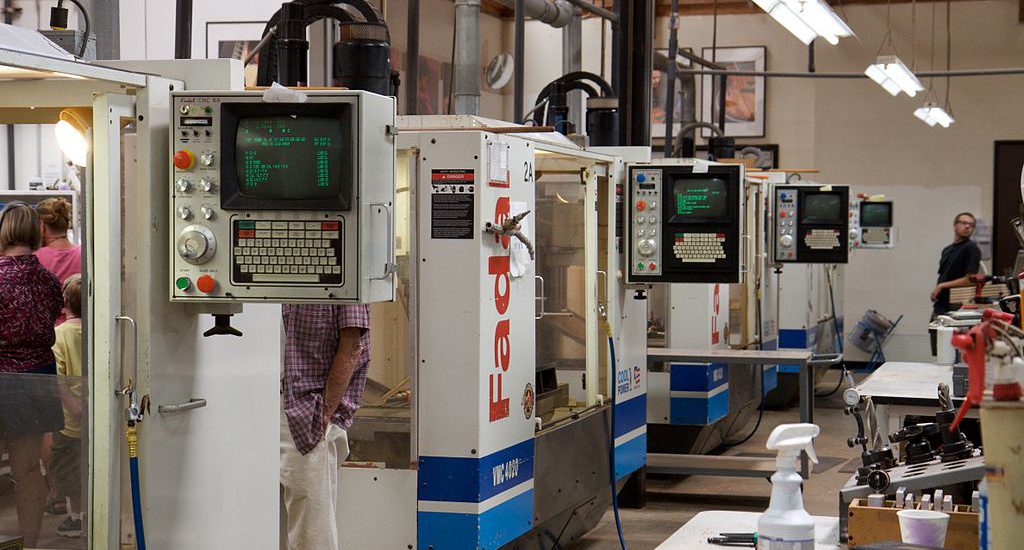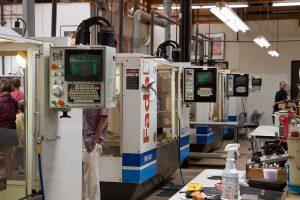- August 7, 2019
- Posted by: David Marshall
- Category: Digital Transformation, Measurement

When you embrace measurement as a way to improve productivity of your manufacturing processes, you’ll find all sorts of problems you never knew existed. When we started measuring everything at Robroy, we not only found different problems and issues in different facets of our manufacturing facilities, we discovered that there was a 16 percent rejection rate throughout the entire process.
In other words, we were losing 16 percent of everything we made, and only 84 percent of our work was making it out the door. (That doesn’t mean that 84 percent was perfect either. There were issues with a lot of those items as well.)
Having made that discovery, the question then became “What was the cause of those rejects? What were the remedies to ensure we didn’t have any more rejects?”
One of the problems we had was the re-straightening of bent pipes. Another problem was the inaccurate trimming of excess PVC on a product. Another was a poor quality inspection before the process to ensure threads were cleared or there wasn’t any imperfections in the base product before we processed it for coating.
Underlying it all was a very poor identification of process failure.
 That means, if you’re processing something and something goes out of whack, if you can identify it early, you can stop the process and fix it rather than continuing to make rejects until the inspector at the very end discovers there was a process variation.
That means, if you’re processing something and something goes out of whack, if you can identify it early, you can stop the process and fix it rather than continuing to make rejects until the inspector at the very end discovers there was a process variation.
For example, imagine discovering at the end of the day that the 1,000 pieces of oil field tubular that you ran were all done incorrectly and were completely unsalvageable.
So part of our productivity improvement process was to get rid of the quality inspectors and to build quality into every step of the process, and to make every individual accountable for the quality of that part that passed through their hands.
We created quality standards at every point in the process — for example, we measured the PVC and zinc coating processes for maximum and minimum thickness — and measured them every hour on the hour, so at the worst, we only had an hour’s worth of product that fell outside the standard. That way, we could catch something very early in the process, not at the end of the process, when it was completely done. We could fix the process and keep everything running.
Improving Productivity in the Back Office
We had problems in the non-manufacturing end of things as well. When I first started with Robroy, there was an issue with our invoicing: at least 50% of the invoices we sent out came back as a debit memo. In other words, the customer didn’t agree with something on the invoice — there was a wrong price, wrong item, wrong quantity, etc.
That means if we sent 2,000 invoices a month, 1,000 of them were disputed, and someone in our office had to investigate whether the dispute was accurate or not and then correct the problem.
When we started measuring everything, we discovered that a high percentage of invoices were being disputed because of incorrect pricing. The reason we had incorrect pricing was because we were accepting a lot of verbal orders. We needed to provide a cure at the source of the problem, not at the end of the process.
The very first thing I did to improve productivity was to implement a rule that anyone who put in a verbal order, not an official written order, would be fired. Secondly, I instituted a 14-point edit for each order that had been entered.
You had to have a bona fide account number, PO number, legible quantity, part numbers, and an agreed-upon-and-approved price, plus the originating quote. And there had to be a clear and concise shipping address.
Doing just that dropped our disputed invoices to next to nothing. It also took a hell of a lot of people out of the process. For one thing, only a few people could now place orders, but it also cut back on other processes.
For example, if someone didn’t get their correct part, one of our staff people would have to check our inventory to see if we had too many units of one item and too little of another. Then we would have to issue a return for the part the customer had and ship them the part they originally wanted.
Then we had to receive the returned part and it would have to be inspected, reboxed, and returned to the shelf, and the inventory adjusted. All of that because someone shipped out the wrong part in the first place.
We measured every person in this office to a Zero Credits Issued standard, meaning they couldn’t issue any credits because of an error, miscalculation, or other easily-avoidable error someone in our operation had made. And it ended up saving us millions of dollars per year in credits and error correction.
I’ve been a manufacturing executive, as well as a sales and marketing professional, for a few decades. Now I help companies improve productivity and turn around their own business. If you would like more information, please visit my website and connect with me on Twitter, Facebook, or LinkedIn.
Photo credit: Marcin Wichary (Wikimedia Commons, Creative Commons 2.0)

